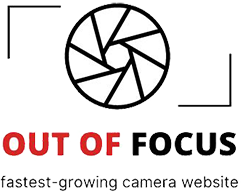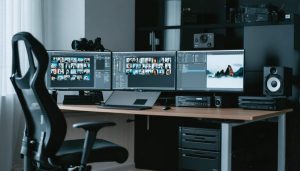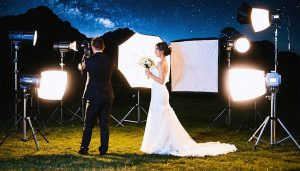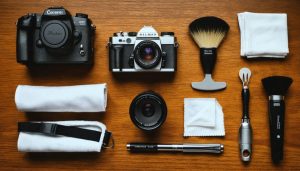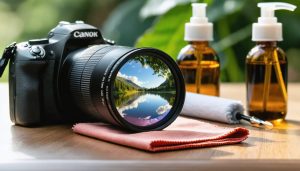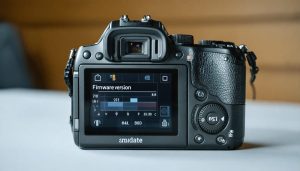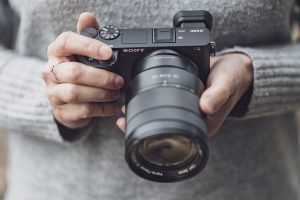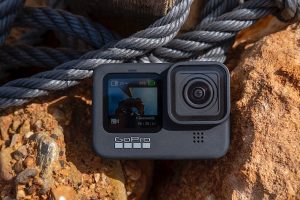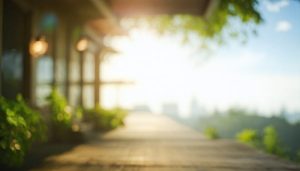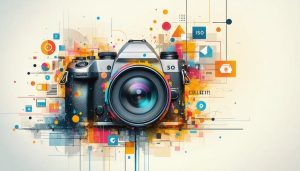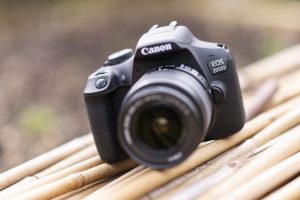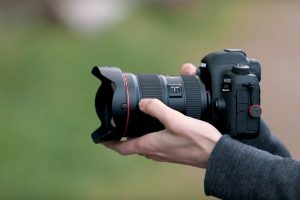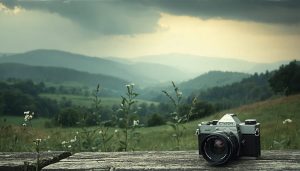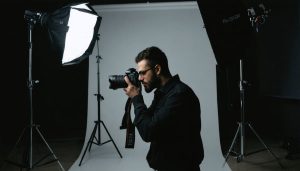
Protect your valuable photography equipment with Z-Wave humidity sensors’ precise, real-time moisture monitoring capabilities. These smart devices integrate seamlessly into existing home automation systems, providing instant alerts when humidity levels threaten your gear. Unlike basic hygrometers, Z-Wave sensors enable automated responses through humidity protection techniques – activating dehumidifiers, adjusting HVAC systems, or triggering smart vents when conditions become dangerous for sensitive camera equipment. Whether you’re safeguarding a professional studio or home collection, these wireless sensors offer reliable 24/7 environmental monitoring with military-grade accuracy down to ±2% relative humidity. Their long battery life, extensive range, and seamless integration with popular smart home platforms make them an essential investment for protecting thousands of dollars worth of photography gear from moisture damage.
Why Humidity Matters for Your Photography Equipment
The Danger Zone: Optimal Humidity Levels for Camera Storage
When it comes to protecting your precious camera equipment, maintaining proper humidity levels is one of the most crucial camera maintenance tips you can follow. The ideal relative humidity range for camera storage is between 35% and 45%. Anything outside these parameters can spell trouble for your gear.
High humidity levels (above 60%) create the perfect breeding ground for fungus on your camera’s lens elements and sensor. This can lead to permanent damage that’s costly to repair or may render equipment unusable. Additionally, excessive moisture can corrode electronic components and deteriorate lens coatings.
On the flip end, extremely low humidity (below 30%) isn’t kind to your gear either. It can cause rubber components to crack, leather parts to dry out, and lubricants to become less effective. Static electricity buildup becomes more likely, potentially affecting sensitive electronics.
By monitoring humidity levels with a Z-Wave sensor, you’ll receive instant alerts when conditions drift into dangerous territory, allowing you to take immediate action to protect your investment. Think of it as an early warning system for your gear’s long-term health.
Common Signs of Moisture Damage
Protecting your photography equipment from moisture damage is crucial, and recognizing early warning signs can save you from costly repairs. Watch for foggy viewfinders or LCD screens, which often indicate dangerous humidity levels inside your gear. If you notice condensation forming between lens elements or strange spots appearing on your sensor, these are clear red flags that require immediate attention.
Your camera’s performance can also reveal moisture-related issues. Erratic autofocus behavior, sticky buttons, or unusual error messages might indicate internal humidity problems. Pay special attention to any musty odors coming from your camera bag, as this could signal the beginning of fungal growth – a photographer’s nightmare that can permanently damage your equipment.
Metal components showing signs of corrosion or oxidation, particularly around battery compartments or lens mounts, demand immediate action. Following proper lens care and cleaning protocols becomes even more critical when you spot these warning signs. Remember, white residue or spotting on lens surfaces often indicates prolonged exposure to high humidity, which can deteriorate lens coatings and affect image quality.
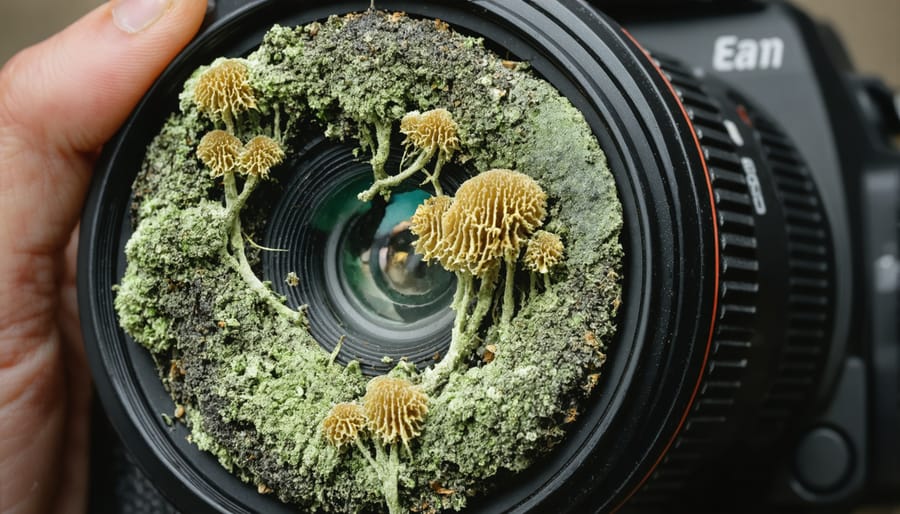
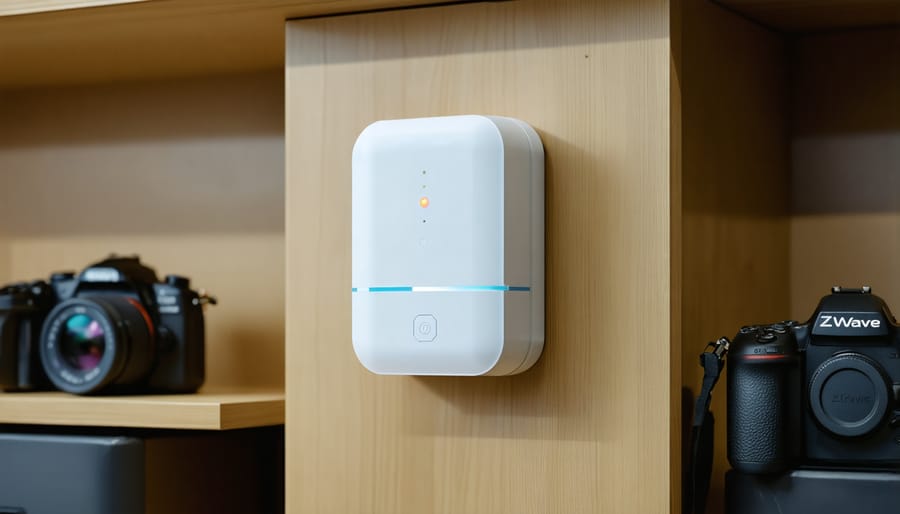
Z-Wave Humidity Sensors: Smart Protection for Your Gear
How Z-Wave Sensors Work
Z-Wave humidity sensors operate through a sophisticated mesh network system that enables seamless communication between devices. At their core, these sensors contain specialized capacitive or resistive elements that measure moisture levels in the air by detecting changes in electrical properties. When humidity levels change, these elements produce varying electrical signals that are converted into digital readings.
What makes Z-Wave sensors particularly effective is their ability to transmit data wirelessly using low-energy radio waves at a frequency of 908.42 MHz (in North America). This specific frequency helps avoid interference with common household devices while ensuring reliable communication. Each sensor acts as both a transmitter and a receiver, creating a mesh network where signals can hop from device to device until reaching their destination.
The sensors regularly sample humidity levels at predetermined intervals, typically every few minutes. When significant changes are detected, or when scheduled reports are due, the sensor transmits this data to your Z-Wave controller or hub. This communication is bidirectional, allowing the hub to not only receive data but also send commands back to the sensor for configuration changes or status requests.
One of the key advantages of Z-Wave sensors is their power efficiency. Most models operate on battery power for months or even years, thanks to optimized sleep cycles and efficient data transmission protocols. The mesh network architecture also ensures that if one communication path is blocked, the system automatically finds alternative routes to maintain reliable connectivity.
Key Features to Look For
When selecting a Z-Wave humidity sensor for your photography equipment storage, several key features deserve special attention. First, look for sensors with high accuracy ratings, ideally within ±2% relative humidity. This precision is crucial for maintaining optimal conditions for sensitive camera gear and lenses.
Response time is another critical factor. The best sensors can detect changes within 10-15 seconds, allowing for quick adjustments to protect your equipment. Seek out models with clear digital displays that show both current and historical readings, making it easier to track environmental patterns over time.
Battery life matters significantly – opt for sensors that can operate for at least a year on a single set of batteries. Some premium models offer rechargeable options or direct power connections. Ensure the sensor has a strong wireless range, typically 100 feet or more indoors, to maintain reliable communication with your Z-Wave hub.
Look for sensors with customizable alerts and automation capabilities. The ability to set specific humidity thresholds and receive immediate notifications when conditions become unsafe for your gear is invaluable. Some advanced models also include temperature monitoring and dew point calculations, providing comprehensive environmental oversight.
Finally, consider sensors with data logging features that can store historical readings. This information helps identify patterns and potential issues before they damage your valuable photography equipment.
Setting Up Your Z-Wave Humidity Monitoring System
Optimal Sensor Placement
When it comes to protecting your photography equipment, proper placement of z-wave humidity sensors is crucial. For optimal monitoring of your camera storage solutions, position sensors at both the top and bottom levels of your storage space, as humidity levels can vary significantly with height.
For camera bags and cases, place the sensor near your most valuable gear but avoid direct contact with equipment. In dedicated storage rooms or cabinets, install sensors in corners where air circulation might be limited. If you’re using a dry cabinet, position one sensor inside and another outside to monitor the effectiveness of your humidity control.
For larger collections, consider creating zones with multiple sensors. Place them strategically around your storage area, focusing on spots near windows, air conditioning vents, or exterior walls where humidity fluctuations are most likely to occur. Remember to keep sensors at least 6 inches away from any dehumidifying equipment to ensure accurate readings.
A good rule of thumb is to use one sensor for every 100 square feet of storage space, adjusting this number based on your specific environment and the value of your equipment.

Configuring Alerts and Automation
Setting up alerts and automation with your Z-Wave humidity sensor is crucial for protecting your valuable photography equipment. Most modern Z-Wave hubs allow you to create custom notification rules based on specific humidity thresholds. For your gear room or storage area, configure alerts to trigger when humidity levels exceed 65% or drop below 35% – the danger zones for camera equipment.
To set up basic notifications, use your Z-Wave hub’s mobile app or web interface to establish trigger points. You can receive alerts via push notifications, email, or SMS. For more sophisticated setups, consider creating multi-device automations. For example, when humidity rises above your set threshold, the system can automatically activate a dehumidifier or fan connected to a Z-Wave smart plug.
Advanced users might want to implement conditional automations. These could include turning on circulation fans during specific times of day when humidity typically spikes, or activating backup dehumidifiers if primary units aren’t managing to lower humidity levels within a set timeframe.
Many photographers find it helpful to set up different alert levels: warning notifications at 60% humidity and urgent alerts at 65%. This graduated system helps you take preventive action before conditions become truly dangerous for your equipment. Remember to also configure automated reports to track humidity patterns over time, helping you identify and address seasonal variations or recurring issues.
Integration with Other Climate Control Systems
Z-wave humidity sensors can seamlessly integrate with various climate control systems to create a comprehensive environmental management solution. When connected to compatible smart home hubs, these sensors can trigger actions in dehumidifiers, humidifiers, and HVAC systems based on real-time humidity readings.
For photography enthusiasts, this integration is particularly valuable. You can set up automated responses where your dehumidifier activates when humidity levels exceed safe thresholds for your equipment. Many Z-wave sensors also work with smart vents and fans, allowing for targeted climate control in specific areas like your gear storage room or studio space.
The real power comes from creating custom automation rules. For instance, you can program your system to maintain optimal humidity levels during specific times of day or adjust based on seasonal changes. Some advanced setups even allow for multiple sensor readings to work together, creating zones of protection for different types of equipment.
Most modern smart home platforms support these integrations out of the box, making setup relatively straightforward for both beginners and experienced users. This interconnected approach ensures your valuable photography equipment remains protected without constant manual monitoring.
Real-World Applications and Success Stories
Professional photographer Sarah Chen’s story perfectly illustrates the power of Z-Wave humidity sensors in protecting valuable equipment. After losing several vintage lenses to fungus growth in her humid Seattle studio, she implemented a comprehensive Z-Wave monitoring system. “The sensors automatically trigger dehumidifiers when moisture levels rise above 60%,” Chen explains. “Since installation, I haven’t had a single humidity-related issue with my gear.”
Wedding photographer Marcus Rodriguez uses Z-Wave sensors across his home studio in Florida. His setup includes sensors in multiple storage areas, each connected to his smartphone through a Z-Wave hub. “During hurricane season, the real-time alerts have saved my equipment multiple times,” Rodriguez shares. “I can respond immediately when humidity spikes, which is crucial for proper film camera maintenance and protecting digital equipment.”
The Chicago Art Institute’s photography department demonstrates institutional-scale implementation. They installed Z-Wave humidity sensors throughout their archives, protecting millions of dollars worth of historical photographs and equipment. The system’s automation capabilities integrate with their climate control systems, maintaining optimal conditions 24/7.
Another success story comes from vintage camera collector James Wong, who manages a collection of over 200 cameras in Hong Kong’s challenging climate. His Z-Wave system includes multiple sensors strategically placed in display cases and storage cabinets. “The mesh network capability means I get consistent readings throughout my three-story home,” Wong notes. “The historical data helps me identify seasonal patterns and adjust my preservation strategy accordingly.”
These real-world applications demonstrate how Z-Wave humidity sensors have become indispensable tools for photography professionals, offering reliable protection for valuable equipment while providing the convenience of remote monitoring and automated responses.
Z-Wave humidity sensors represent a smart investment for both home automation enthusiasts and professional photographers seeking to protect their valuable equipment. These devices offer peace of mind through reliable monitoring and automated responses, ensuring your environment maintains optimal conditions around the clock. The ability to receive real-time alerts on your smartphone and integrate with other smart home devices makes these sensors an invaluable tool in preventing moisture-related damage to sensitive photography gear.
By implementing a Z-Wave humidity sensor system, you’re not just protecting your equipment; you’re also creating a more efficient and comfortable workspace. The data collected over time helps you understand seasonal patterns and make informed decisions about equipment storage and studio conditions. The wireless nature of Z-Wave technology means you can place sensors exactly where they’re needed without worrying about complex wiring or installation procedures.
For photographers serious about preserving their investment in cameras, lenses, and other moisture-sensitive equipment, Z-Wave humidity sensors provide an accessible and effective solution. The initial setup cost is quickly offset by the potential savings in equipment preservation and maintenance. Whether you’re managing a professional studio or protecting a home collection, these sensors offer the perfect blend of convenience, reliability, and practical functionality.
Take the step toward better equipment protection today by incorporating Z-Wave humidity sensors into your photography environment. Your gear will thank you for it.
